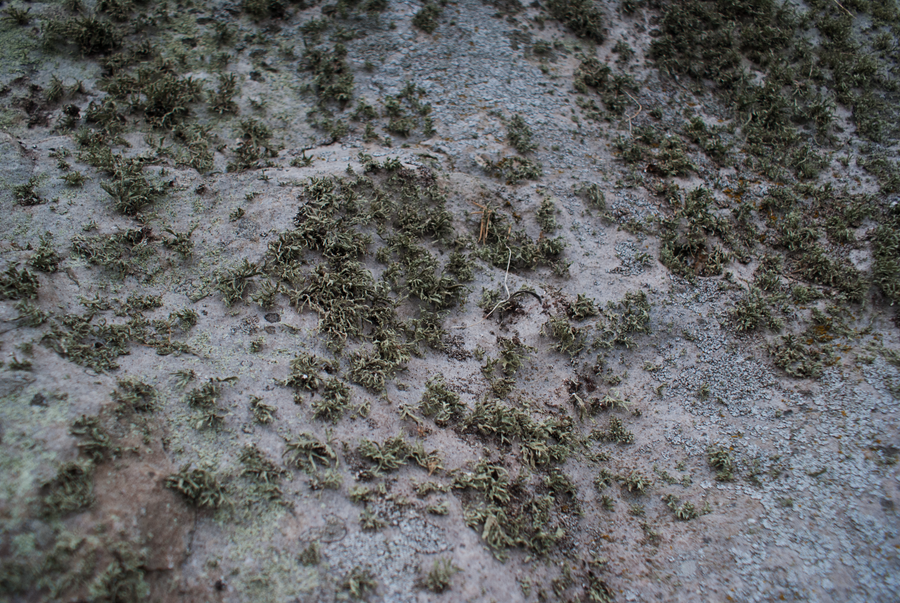| View previous topic :: View next topic |
Wile E. Coyote
In: Arizona
|
|
 |
|
If lichen is important.
It might be worth considering the significance if any of lichen on coastal megaliths?
Where is a star researcher when you need one?
|
|
 |
|
 |
|
Mick Harper
Site Admin

In: London
|
|
 |
|
|
Let's do that then. As I understand it lichen grows on rock, so yes. On coastal rock, maybe specially valuable sorts of lichen, so yes. On specially carved regular-shaped rocks ... surely no.
|
|
 |
|
 |
|
Ishmael

In: Toronto
|
|
 |
|
|
But Bristol Channel is entirely in the wrong place.
|
|
 |
|
 |
|
|
|
|
 |
|
| Mick Harper wrote: | | Let's do that then. As I understand it lichen grows on rock, so yes. On coastal rock, maybe specially valuable sorts of lichen, so yes. On specially carved regular-shaped rocks ... surely no. |
Lichen grows on trees too - we have some on one of ours. And it grows on specially carved gravestones as well if they are old enough.
|
|
 |
|
 |
|
|
|
|
 |
|
|
There are at least three types: crustose, fruticose lachrymose...
|
|
 |
|
 |
|
Mick Harper
Site Admin

In: London
|
|
 |
|
| And it grows on specially carved gravestones as well if they are old enough. |
Not a bad point. How do you guarantee that rocks will be left undisturbed? Well, Stonehenge is still with us.
|
|
 |
|
 |
|
|
|
|
 |
|
There is some lichen on Stonehenge's trilithons:

You may be interested in 'The Stonehenge Lichen Puzzle':
| Lichens also pose interesting questions during their protracted existence. In the British Lichen Society Bulletin for winter 2003 the problem of the lichen population of Stonehenge is raised. Experts examining the enormous sarsens of this prehistoric monument during the summer of 2003 discovered lichens typical of those inhabiting sea cliffs. At least nine species had maritime affinities. They included the prominent Ramalina siliquosa in abundant large shaggy clumps. Yet the stones are 50km from the nearest coastline. |
http://www.pharmaceutical-journal.com/opinion/comment/stonehenge-lichen-puzzle-/-professional-priorities-examined-/-strengthening-health-systems-for-the-future-/-useless-wit/20011099.article
But with all the touching/rubbing the stones had (get?) it will be restricted, especially the more fragile fruticose and foliose types (sorry, I was joking about lachrymose). Crusty ones are the toughest; once you have the others you can be confident the local atmosphere is relatively unpolluted.

|
|
 |
|
 |
|
Wile E. Coyote
In: Arizona
|
|
 |
|
Thanks Auro.
Very interesting find.
|
|
 |
|
 |
|
|
|
|
 |
|
| Mick Harper wrote: |
It should not be ruled out that 'Hi Brasil' is part of a deliberate campaign of misinformation since Bristolians (specifically), Iberians (both) and Europeans (generally) were all exploiting the Atlantic (for cod mainly it would seem!) at this time and everyone was guarding their patch(es) with great vigilance and no doubt paranoia. Fisherman are still like that. |
Not withstanding this important point I'm still convinced Hy Brasil is most likely to be on the Porcupine Bank, currently 200 metres below the sea surface. Iceland is almost as large as Ireland; the mariners maps were not so inaccurate as to confuse its size on such a gross scale (that would make it too easy to not find and disprove any Bristolian chicanery). It is in roughly the right place, the mounds are right size and there is a cleft through which a strait may have passed.
Ergo, that Hy Brasil is after all likely to have existed, unlike some of the other speculative islands, is in itself remarkable.
But good luck with the Bristol theory...you may come up with something fascinating.
|
|
 |
|
 |
|
Mick Harper
Site Admin

In: London
|
|
 |
|
|
No, we all prefer yours. Now what?
|
|
 |
|
 |
|
|
|
|
 |
|
I wasn't expecting you to say that.
There is a major difficulty even with this idea: the depth. I am talking 200 metres here. This is compared with a spot height on the Grand Banks off Newfoundland of 13 metres; the Sunda Shelf (Indonesia) of 38 metres; Dogger Bank of 43 metres; the Armoricain shelf, (west of Brittany) 132 metres; Rockall Plateau 368 metres.
It took the melting of major ice sheets to drown Dogger and we have an orthodox timetable for that of a few thousands of years ago. But the Brasil sightings extend into comparatively modern times. What could have caused such a dramatic end to the island(s)? And if they sank over 200 metres, so may other islands become seabanks in the same period.
* Seabank = plateau of considerable extent; seamount = usually conical/formerly volcanic peak rising 1000 metres or more from the seabed.
As far as is known sea levels have risen much more slowly since, though local lore around our coasts suggests they were lower in Roman times than now. Tsunami do occasionally occur in the Atlantic, best known being the Storegga slide off Norway. Here are some historical references:
http://www.nat-hazards-earth-syst-sci.net/8/587/2008/nhess-8-587-2008.pdf
There are none for Westropp & O'Flaherty's sighting of 1872. They may have been attention-seeking of course, inspired by something much older. No known tsunami stands out since 1000 AD though, and many would have caused temporary flooding anyway.
Undersea earthquakes can, though do not always cause tsunami. They are common around the Mid-Atlantic ridge and the transverse fractures in the North Atlantic. Directly or indirectly triggered slope collapses also happen, e.g. that of the Rockall Bank
http://www.sciencedirect.com/science/article/pii/S002532271200312X
It would have to be something exceptional to sink Hy Brasil.
In the meantime perhaps a more detailed reading of the Westropp and other accounts may be useful.
|
|
 |
|
 |
|
Mick Harper
Site Admin

In: London
|
|
 |
|
|
What about Surtsey? What goes up must come down. Never tell people to read something. They never do. You read it and get us to follow.
|
|
 |
|
 |
|
Wile E. Coyote
In: Arizona
|
|
 |
|
| But Bristol Channel is entirely in the wrong place. |
| Ergo, that Hy Brasil is after all likely to have existed, unlike some of the other speculative islands, is in itself remarkable. |
| No, we all prefer yours. Now what? |
| Jose M wrote: | | The dogs may bark, but the caravan moves on. |
|
|
 |
|
 |
|
Mick Harper
Site Admin

In: London
|
|
 |
|
|
We all preferred your theory, Wiley. Fi-i-i-ght!
|
|
 |
|
 |
|
|
|
|
 |
|
|
Sometimes I wish I'd never ventured into print, Wile. Now I've given myself another job to do. I may have to disappear into the mist for seven years.
|
|
 |
|
 |
|
|